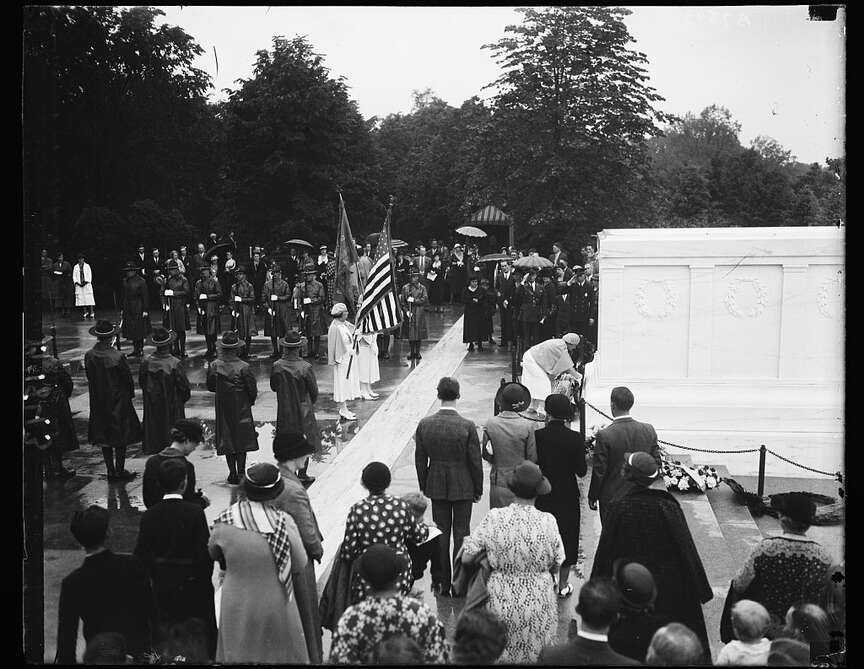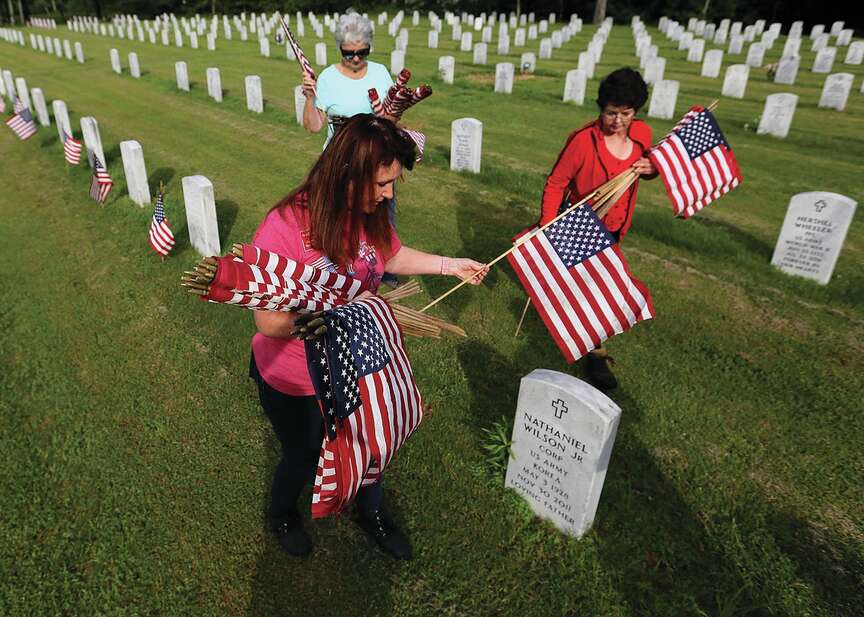Since 1971, Americans have observed Memorial Day as a legal federal holiday occurring on the last Monday of May. Commonly known as the unofficial start of summer, it is part of a three-day weekend filled with cookouts, travel and concerts and, most important, ceremonies honoring the nation’s war dead.
Before it was Memorial Day, it was known as “Decoration Day,” a tradition that began in the aftermath of the Civil War as cities and towns in both the North and South set aside days to decorate the graves of the fallen. And it had nothing to do with summer celebrations and retail sales. It was simply a time of healing as Americans sought to honor those who died in the nation’s deadliest war.
The first nationally proclaimed “Decoration Day” took place on May 30, 1868, at Arlington National Cemetery, the nation’s most sacred burial site for veterans. However, the origin of the holiday itself has become unclear over time with more than 25 cities and towns laying claim as its birthplace.
Women prepare for Decoration Day in 1899. (Library of Congress)
THE BLUE AND THE GRAY
The practice of decorating graves with flowers dates to ancient times, and following the Civil War with its devastating casualties, citizens across the country had begun decorating the graves of the war dead.
According to “The Genesis of the Memorial Day Holiday in America” by Daniel Bellware and Richard Gardiner, the first request for a decoration day holiday came from Mary Ann Williams, secretary of the Ladies Memorial Association of Columbus, Ga. Williams wrote a March 10, 1866, letter to the Columbus Daily Sun that called for establishing “at least one day in each year to embellishing their humble graves with flowers.” The letter soon appeared in newspapers across Georgia and throughout the South leading to establishment of April 26, 1866, as “Decoration Day.” However, a Memphis newspaper erroneously reported the date to be April 25, which prompted a group of women in Columbus, Miss., to go ahead with their decorating a day earlier, thereby staking their claim as to being first. They also decorated the graves of both Confederate as well as Union soldiers who died fighting on Southern battlefields. This inspired poet Frances Miles Finch to write the poem “The Blue and the Gray,” which included this stanza:
“From the silence of sorrowful hours
The desolate mourners go,
Lovingly laden with flowers
Alike for the friend and the foe:
Under the sod and the dew,
Waiting on the judgment day,
Under the roses, the Blue,
Under the lilies, the Gray.”
The poem’s popularity helped spread the word of the event to cities in the North, Bellware and Gardiner wrote. Inspired by people in the South, Maj. John A. Logan, the head of the Grand Army of the Republic, an organization of Union Army veterans, decided a national decoration day should be established. On May 5, 1868, the GAR issued General Orders No. 11 or the “Memorial Day Act,” officially establishing “Memorial Day” as the date to remember the war dead and decorate their graves with flowers, according to the National Cemetery Administration of the U.S. Department of Veterans Affairs. The department said he chose that date because it was a time when flowers would be in bloom across the country.
In the order, Logan wrote that the nation should never forget the costs of the war. “We should guard their graves with sacred vigilance. … Let pleasant paths invite the coming and going of reverent visitors and fond mourners. Let no neglect, no ravages of times, testify to the present or to the coming generations that we have forgotten as a people the cost of a free and undivided republic.”
 A Memorial Day ceremony at the Tomb of Unknown Soldier at Arlington National Cemetery. (Library of Congress)
A Memorial Day ceremony at the Tomb of Unknown Soldier at Arlington National Cemetery. (Library of Congress)
In 1873, New York became the first state to officially recognize the holiday and by 1890 all of the previously known Union states also adopted it. After World War I, the event was expanded to include the fallen Americans of all wars. Still, there was no official federal holiday approved by Congress. In 1950, through congressional joint resolution, lawmakers requested that the president issue a proclamation “calling upon the people of the United States to observe each Memorial Day as a day of prayer for permanent peace and designating a period during each such day when the people of the United States might unite in such supplication.”
Another congressional resolution in 1966, which was proclaimed by President Lyndon B. Johnson, officially recognized Waterloo, N.Y., as the birthplace of Memorial Day. (Waterloo, led by Henry C. Welles, a local druggist, spearheaded a decoration/memorial day that took place on May 5, 1866.) Two years later, the Uniform Monday Holiday Act was passed to become effective in 1971 and designated Memorial Day a national holiday. The act also moved it from May 30 to the last Monday in May, creating a three-day weekend for American workers.
In 2000, the National Moment of Remembrance Act became law. It created the White House Commission on the National Moment of Remembrance, which promotes Memorial Day commemorations. It also encourages all Americans to pause wherever they are at 3 p.m. local time on Memorial Day for a moment of silence to remember and honor those who died in military service.
“It’s a way we can all help put the ‘memorial’ back in Memorial Day,” said Carmella LaSpada, the first executive director of the commission.
In a Washington Post article, LaSpada said she was inspired, in part, to raise awareness about Memorial Day’s true meaning when she met a group of schoolchildren in Lafayette Park in Washington and asked them what Memorial Day meant.
The article says the children responded, “That’s the day when the swimming pool opens.” She responded: “True, but remember that we can go to the pool or a baseball game because brave Americans died for our freedom.”
 Wanda Malone (left), Linda Townsend (top left) and Paulette Yarbrough (right) all of Heber Springs plant flags in front of headstones in preparation for Memorial Day on Wednesday, May 26, 2021, at the Arkansas State Veterans Cemetery at North Little Rock. More photos at www.arkansasonline.com/527flags/ (Arkansas Democrat-Gazette/Thomas Metthe)
Wanda Malone (left), Linda Townsend (top left) and Paulette Yarbrough (right) all of Heber Springs plant flags in front of headstones in preparation for Memorial Day on Wednesday, May 26, 2021, at the Arkansas State Veterans Cemetery at North Little Rock. More photos at www.arkansasonline.com/527flags/ (Arkansas Democrat-Gazette/Thomas Metthe) 



























